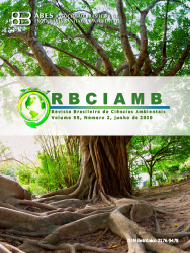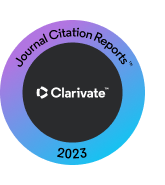EXTREME RAINFALL AND INTENSITY-DURATION-FREQUENCY EQUATIONS FOR THE STATE OF ACRE, BRAZIL
DOI:
https://doi.org/10.5327/Z2176-947820200597Keywords:
intensity-duration-frequency; generalized extreme value distribution; intense precipitation; soil conservation.Abstract
Heavy rainfall causes various problems such as flooding, landslide and erosion, so
it is important to know the information about the intensity-duration-frequency
relationships of local heavy rainfall. Due to the lack of this information for the
state of Acre, this study aimed to analyze historical rainfall series and to adjust
the IDF equations by disaggregating daily rainfall. For the study, the rainfall
stations of the Hydrological Network of the National Water Agency (ANA) of 11
municipalities in Acre were used. The average of annual maximum series ranged
from 89.6 to 118.7 mm. The parameters of Gumbel and generalized extreme value
(GEV) distributions were adjusted, using the methods of moments, the maximum
likelihood method, the L-moments method, and the Chow method for Gumbel
distribution. The adjusted distributions’ adherence to the annual maxima series
was evaluated by the Kolmogorov-Smirnov and Anderson-Darling tests. The GEV
distribution with parameters estimated by the L-moments method stood out as
the best distribution for 73% of stations. A large variation was observed in the
maximum daily rainfall values between seasons, evidencing the need to determine
the values with local data. The IDF equations obtained presented a good fit, with
determination coefficients above 0.99. The adjusted equations allow estimation
of rainfall intensity with a duration to 5 to 1,440 minutes and return period of 2 to
100 years with standard error of less than 6.40 mm h-1.
Downloads
Downloads
Published
How to Cite
Issue
Section
License
Copyright (c) 2020 Revista Brasileira de Ciências Ambientais

This work is licensed under a Creative Commons Attribution 4.0 International License.


























